Cabinet Fever

The Central Catalogue's Main Catalogue, arranged by curatorial department and filed in a classified order originally determined by each department. Photo by the author
«Before Watsonline and The Collection Online, the Met relied upon good old-fashioned card catalogues. Finding books might have been slower going back then, but we still have a soft spot for these relics from the not-so-distant past. I spoke with caretakers of five of the remaining catalogues, and we took a closer look how they've helped us in the internet age. We hope you enjoy them as much as we do!»
The Central Catalogue
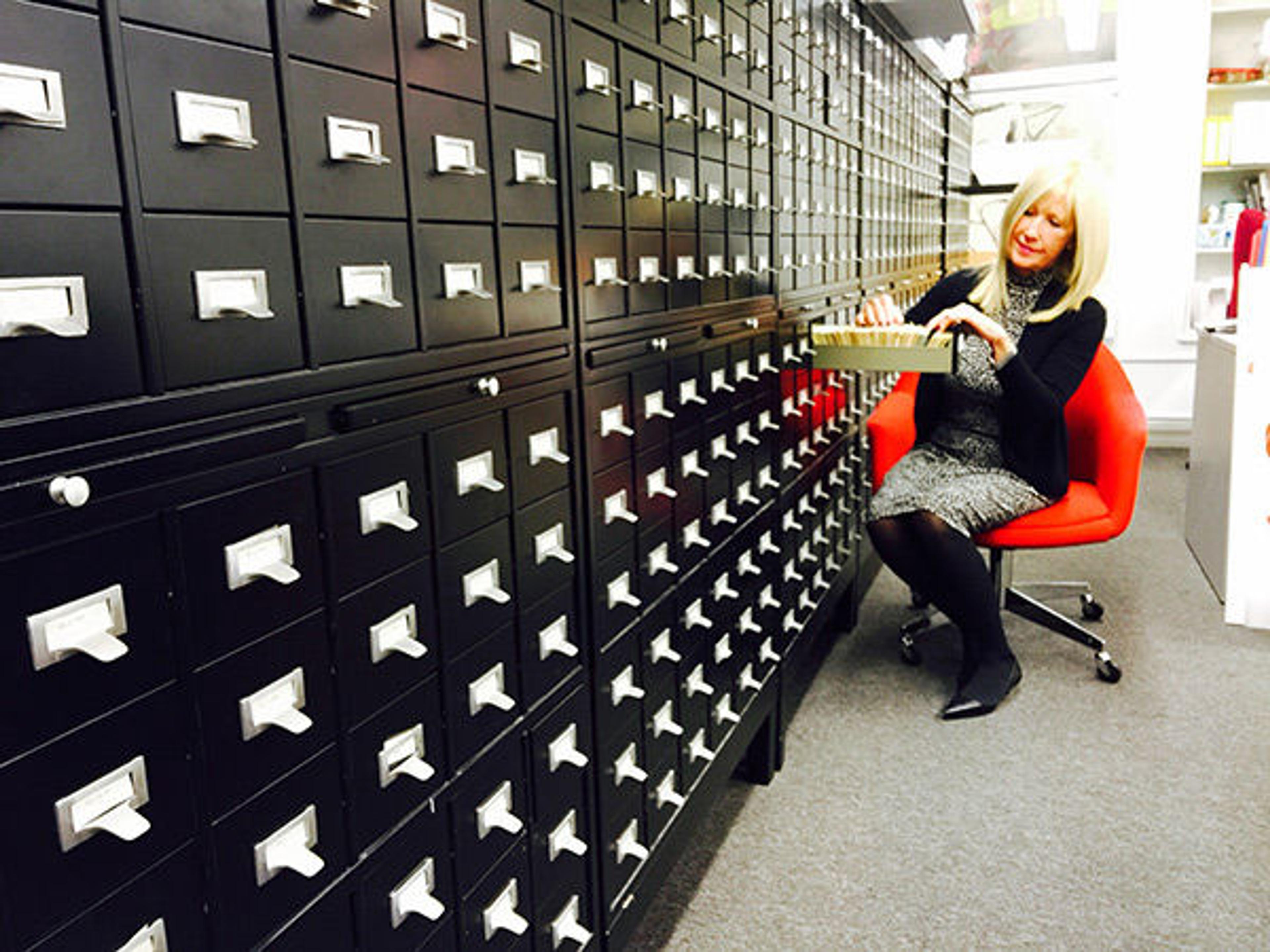
The Central Catalogue's Source File is organized by accession number. The materials in the Museum's Central Catalogue date back to the Museum's founding, and has the original card for the Museum's first ever-acquisition. Photo by the author
"The Central Catalogue, which is administered by the Watson Library, maintains object records for most of the departments in the Museum's collection through the 1990s. Although made less relevant by The Museum System [TMS, the Museum's internal object database] and The Collection Online, the existing cards can still provide valuable information such as curatorial notes and bibliographic references."—Karen Williams, Associate Librarian, Thomas J. Watson Library

The card for the Museum's first-ever acquisition, "Sarcophagus, with cover" (now called "Marbled sarcophagus with garlands"). Photo by Karen Williams
Arts of Africa, Oceania, and the Americas Library Catalogue
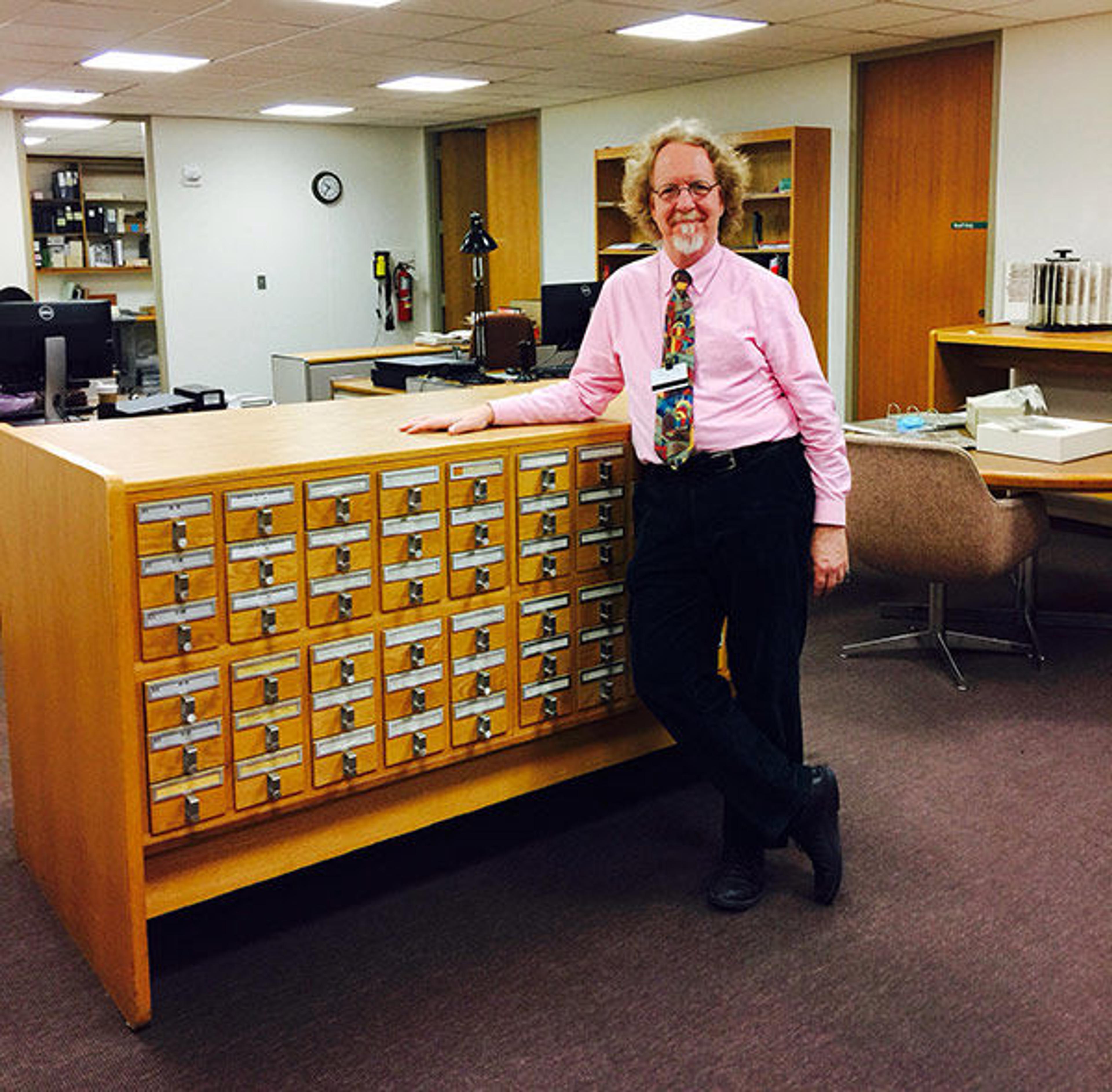
Ross Day stands in front of one of the two double-sided catalogue card units installed in the Goldwater Library in 1980. Watson Library pages books from this library every day. Photo by the author
"Before the [Goldwater] library's holdings were added to what is now WorldCat, the card catalogue combined records for the library's books with an index to articles in its periodicals. The remaining card unit contains the library's unique subject catalogue used before automation." —Ross Day, Museum Librarian, Thomas J. Watson Library

One of the unique subject cards in Goldwater Library. Photo by Ross Day
The Cloisters Library Catalogue
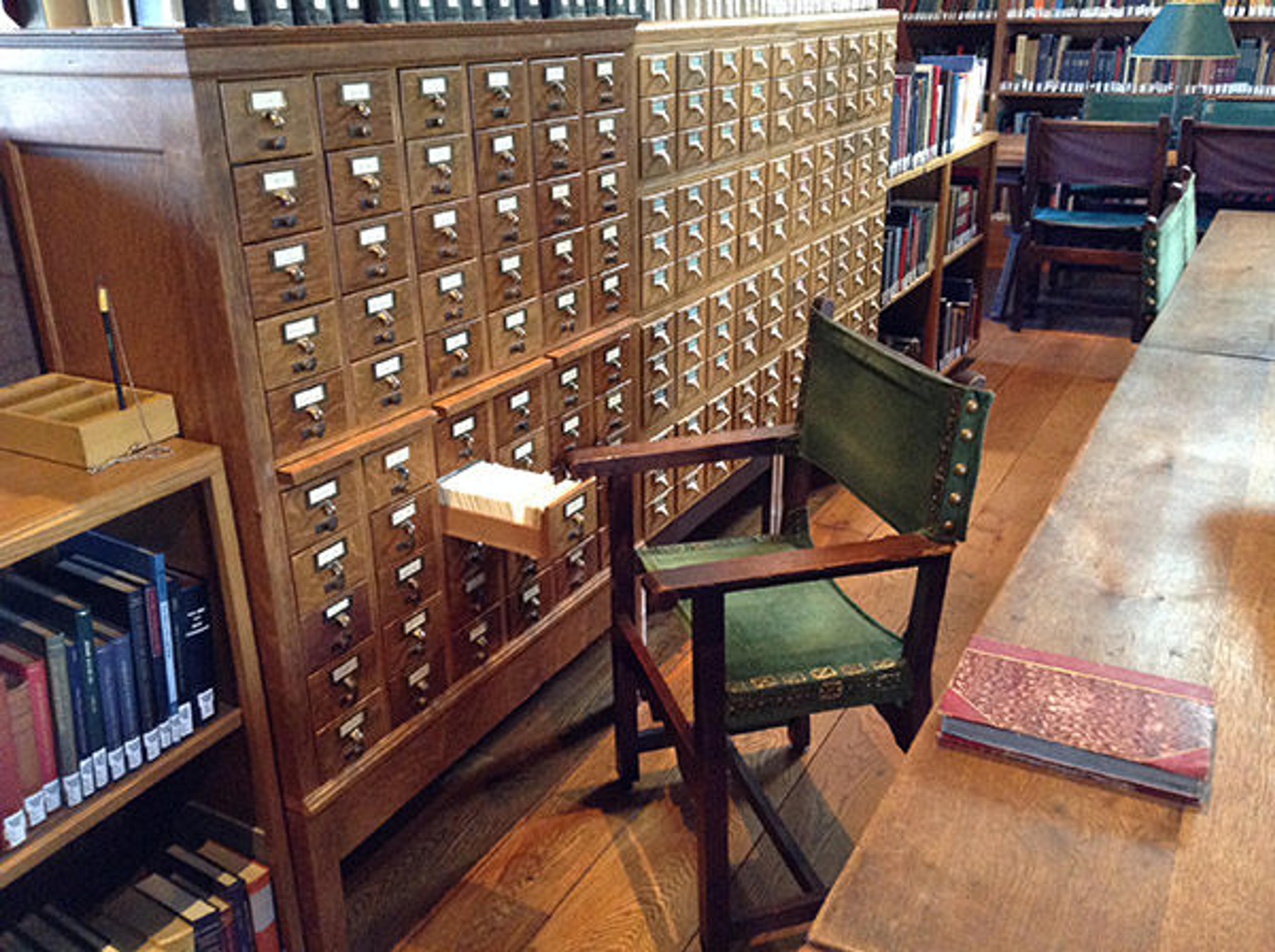
There are many reasons to visit The Cloisters Library, and this catalogue is one of them. Classic and in great condition, we'll take any excuse to head up to The Cloisters. Photo by Michael Carter
"For the present, The Cloisters Library has chosen to retain its card catalogue, although—following the collection's conversion to the Library of Congress classification system—it is no longer of practical use (except, perhaps, by ghosts)." —Michael Carter, Associate Museum Librarian, The Cloisters
European Paintings Catalogue
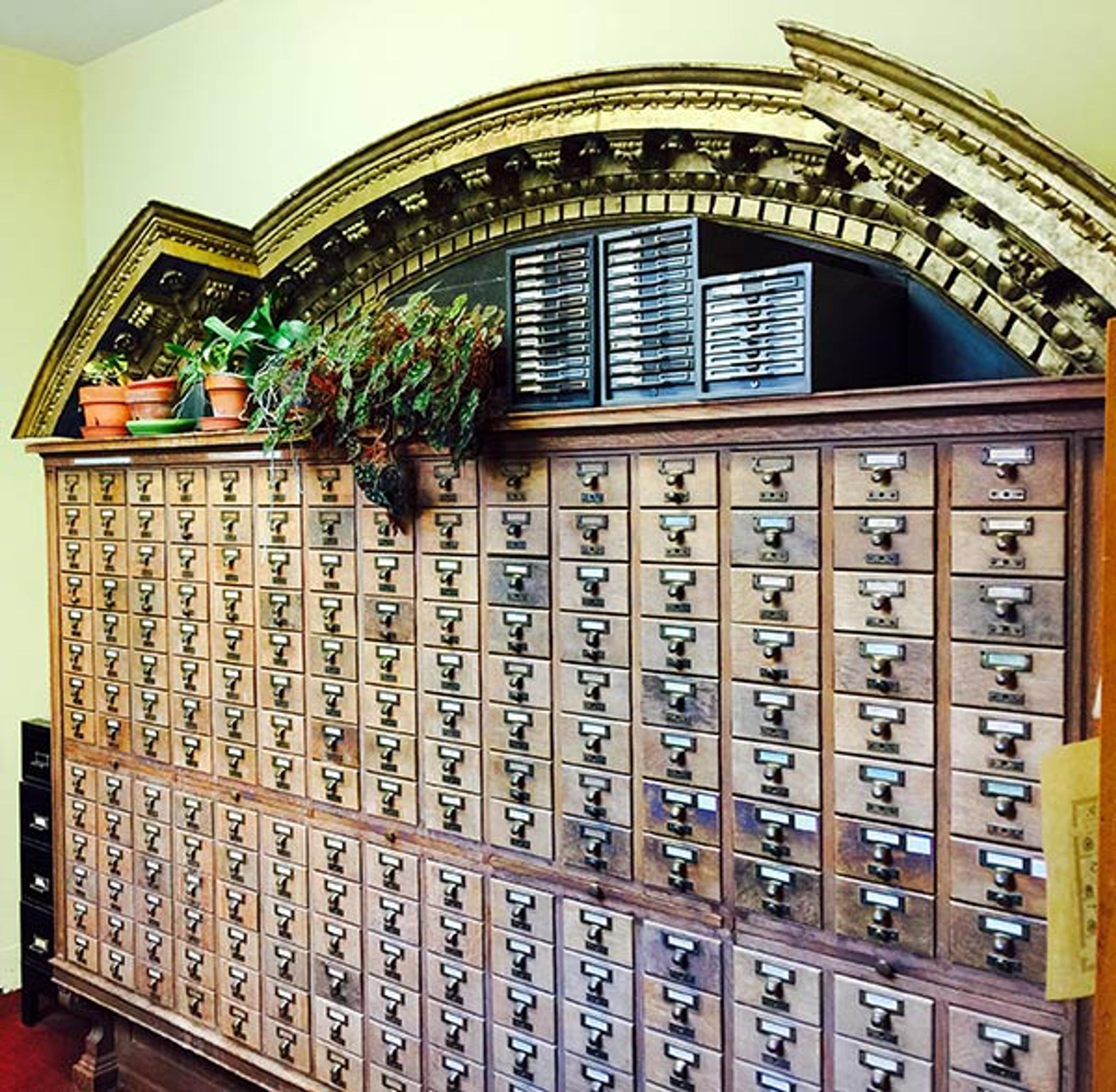
This majestic catalogue has its own frame. Tucked away in a hallway towards the back of the offices in the Department of European Paintings, stumbling upon this catalogue is always a pleasant surprise. Photo by the author
"Although virtually all the information on our catalogue cards has been entered in our computer database (TMS), and no new catalogue cards have been produced for a number of years, the card catalogue remains an important resource. The cards have useful handwritten annotations that do not always translate exactly to a database environment, and the appearance of the cards themselves provides historical context about when and by whom information was added. The cards are also an important check against the computer data."
—Gretchen Wold, Senior Collections Manager, Department of European Paintings
Drawings and Prints Catalogue
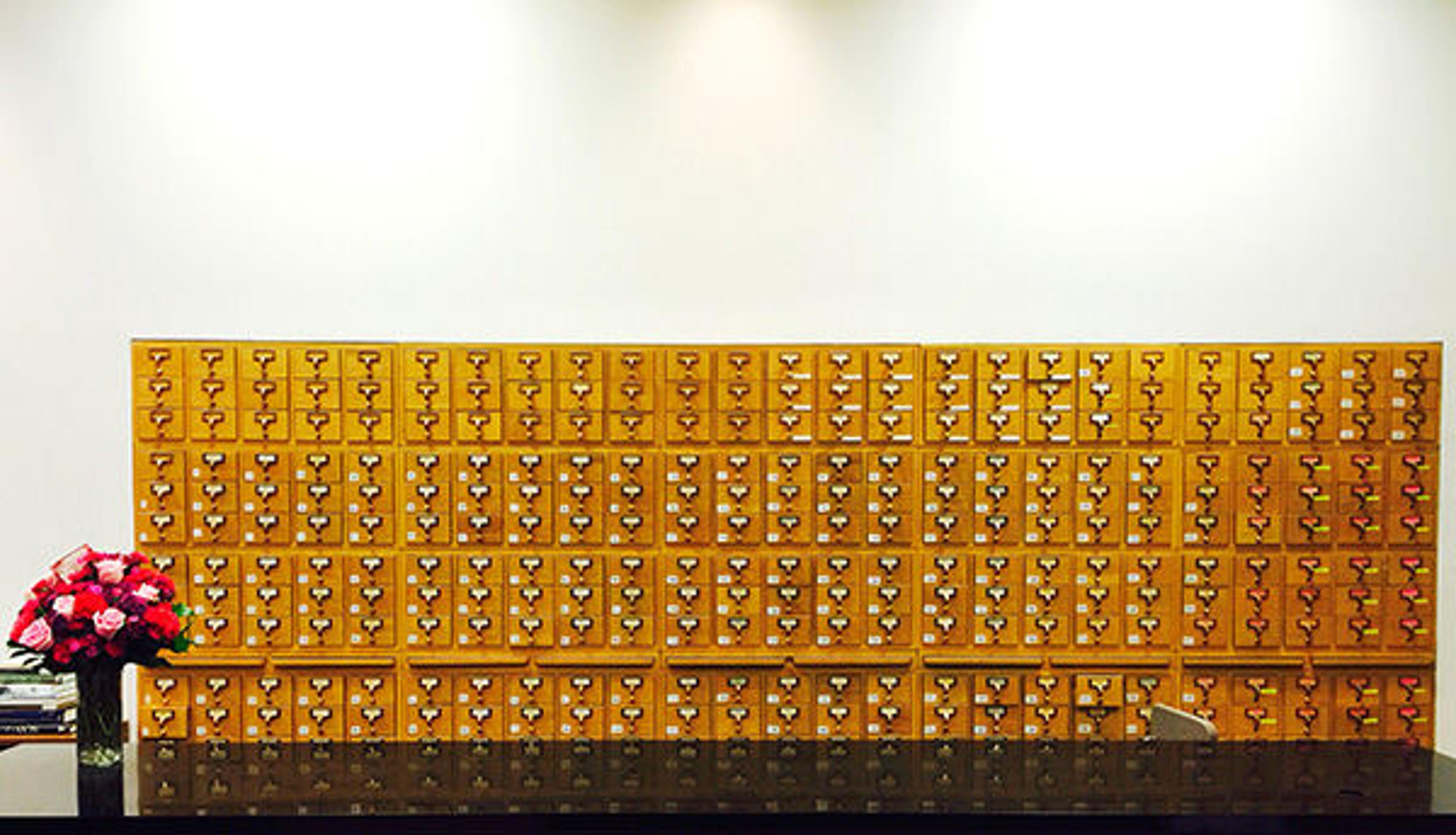
Certainly the sleekest catalogue design we've found in the Museum, the Drawings and Prints model is actually built into the wall, so all you see is the front face. Photo by the author
"Our catalogue is still very much in use. Since our collection has over one million objects, not everything has been entered into our electronic database. Sometimes the information on the cards can be the only information we have on an object. The organization of the catalogue reflects the history of the department and the nature of the collection; some sections are organized by medium and others by accession number." —Allison Rudnick, Assistant Curator, Department of Drawings and Prints
Dana Hart
Dana Hart is the manager for library administration in the Thomas J. Watson Library.